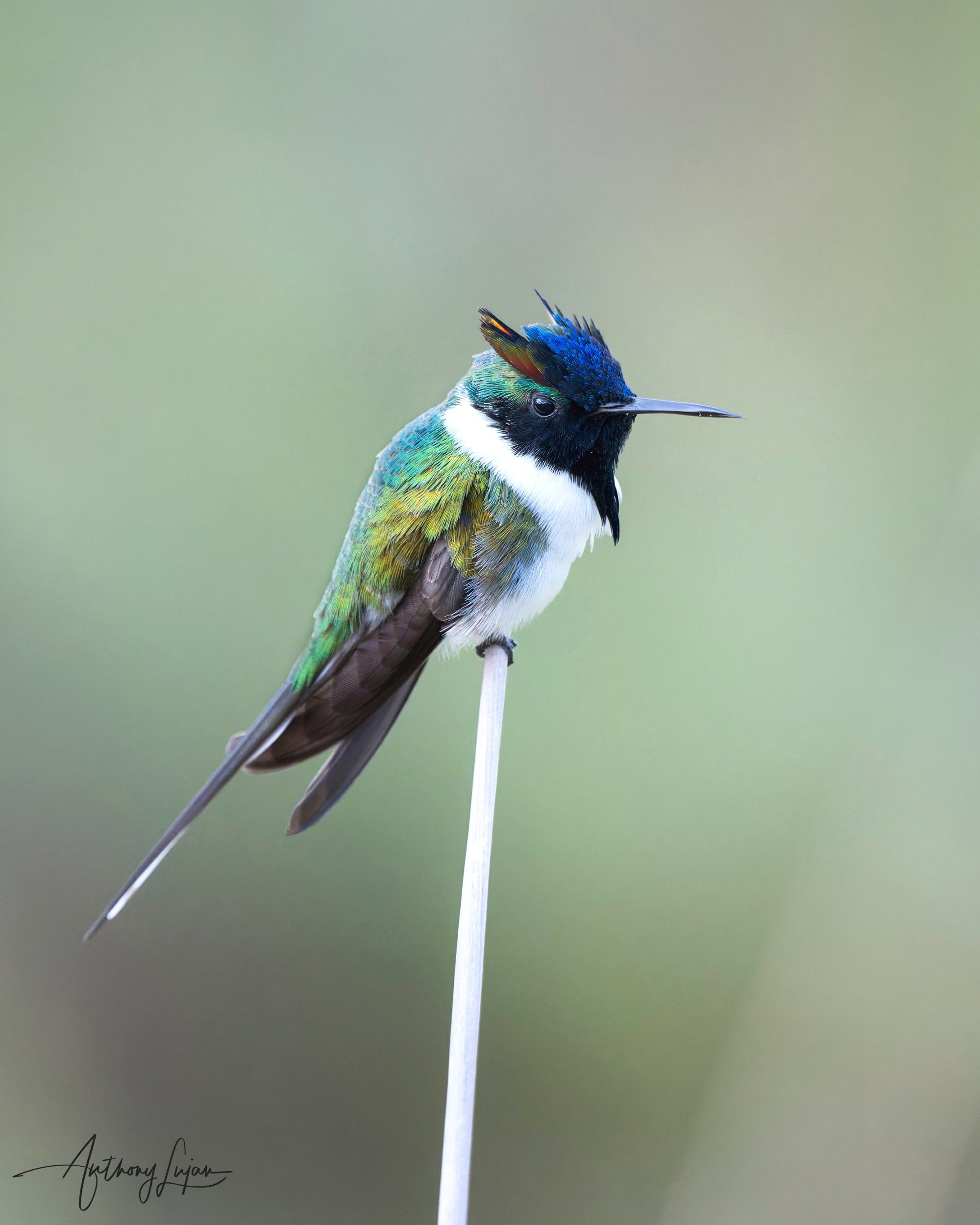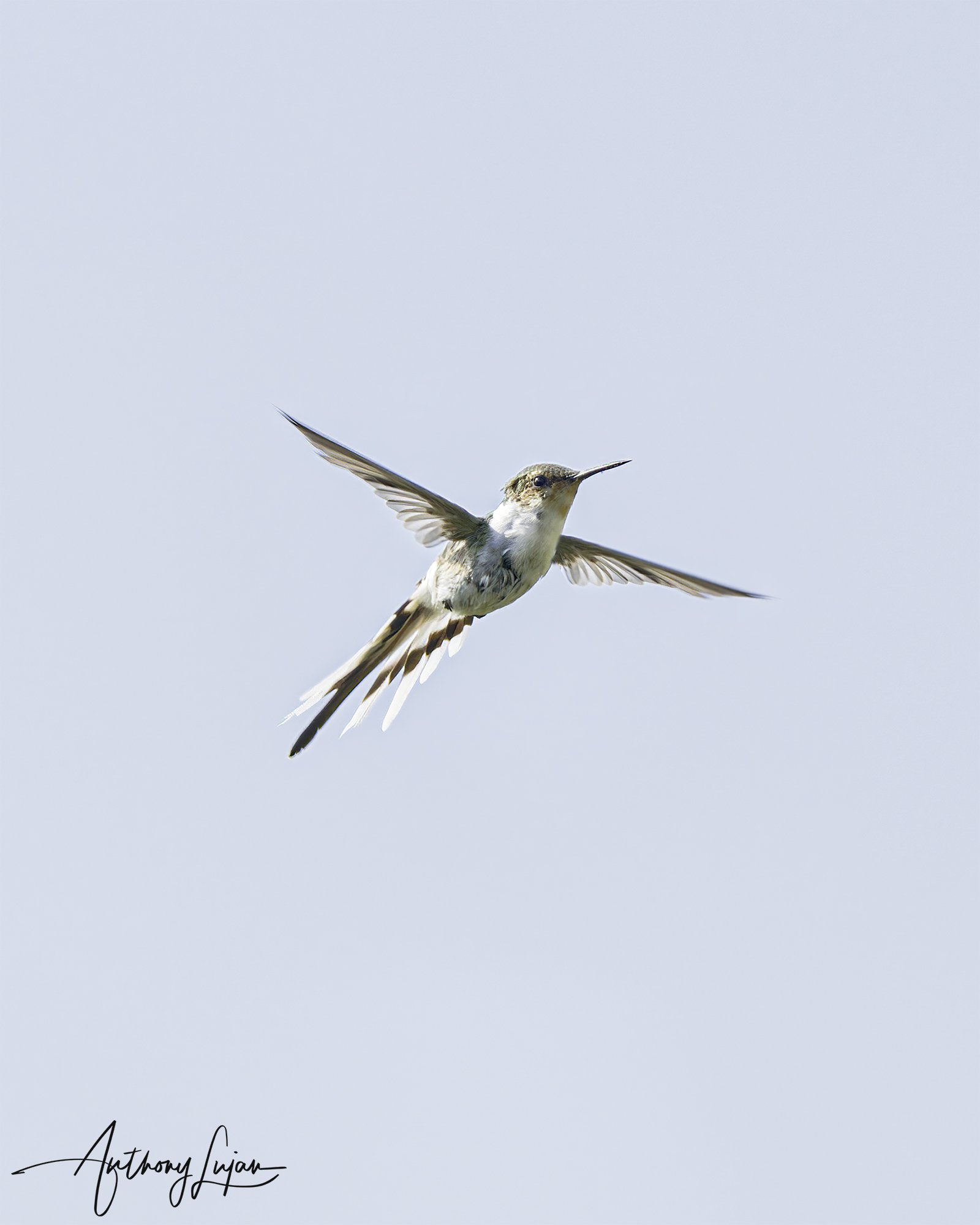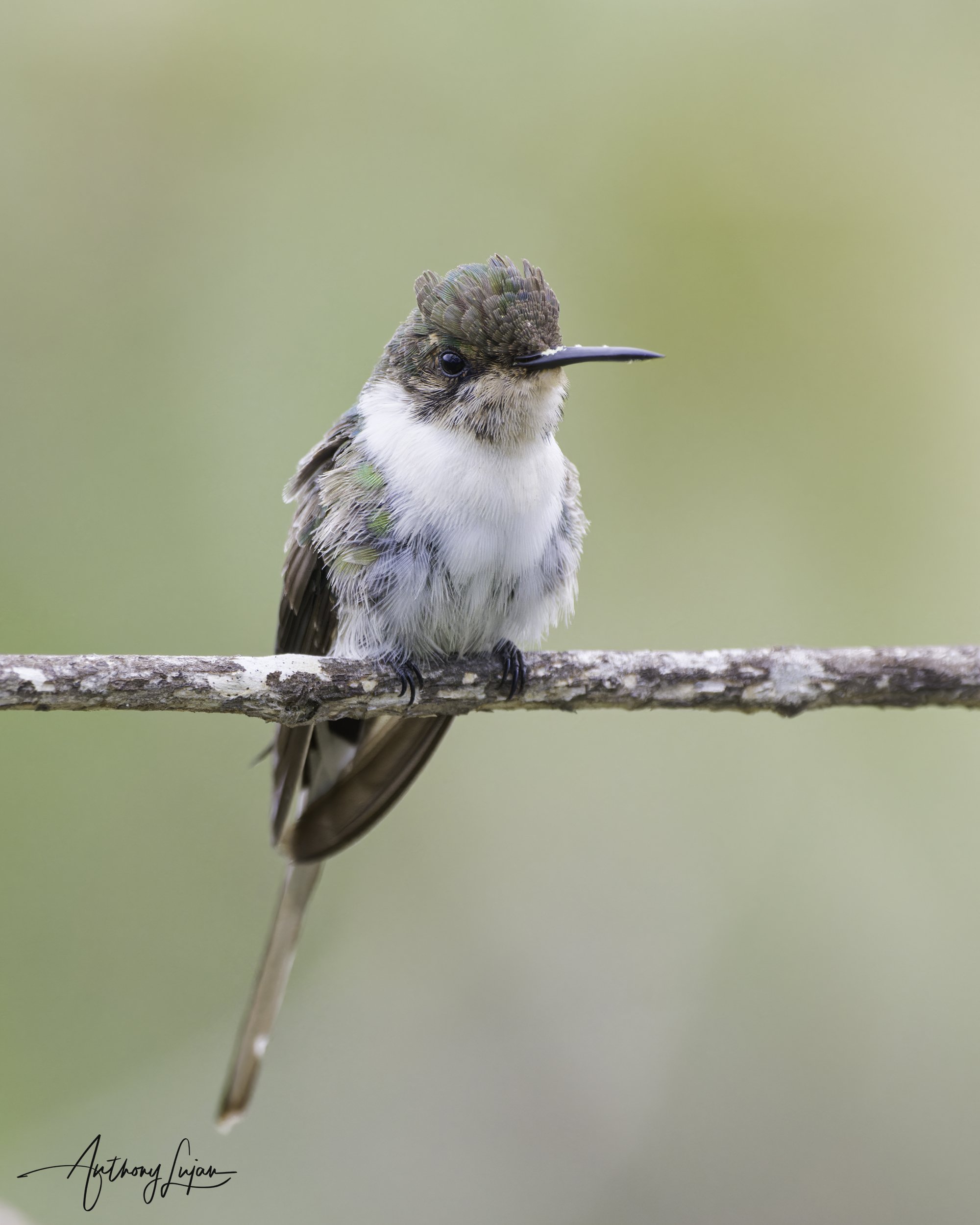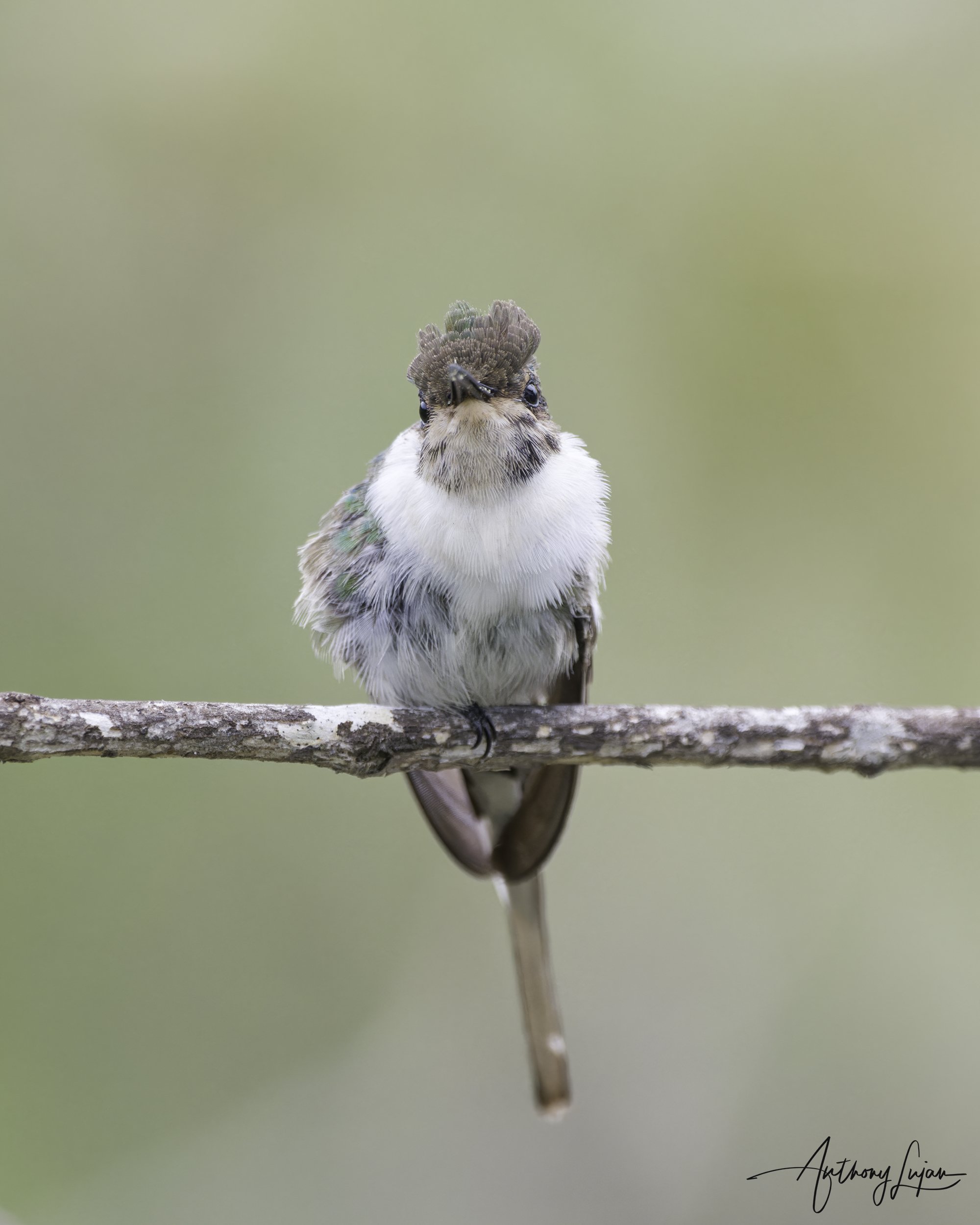Horned Sungem
Horned Sungem (Heliactin bilophus)
Name Origin:
The genus Heliactin combines the Greek helios meaning “sun” and aktin meaning “ray” or “beam,” likely referencing the sunburst-like crown feathers. The species name bilophus comes from Latin bi- meaning “two” and lophus meaning “crest,” referring to the twin "horns" formed by the male’s elongated crown plumes.
Quick Facts
🪶 Length: 8.5–10 cm (3.3–3.9 in)
⚖️ Weight: 2.5–3.0 g (0.09–0.11 oz)
🌎 Range: Eastern and central Brazil, eastern Bolivia, Paraguay, and northeastern Argentina
🧭 Elevation: 100–1,000 m (330–3,300 ft)
🌸 Diet: Nectar and small insects
🏡 Habitat: Cerrado, dry savanna, scrub, and open woodland
🧬 Clade: Lesbiini “Coquettes and Sungems”
📊 Status: Least Concern (IUCN 2024)
Subspecies & Distribution
Monotypic — no subspecies recognized.
Species Overview
The Horned Sungem is a small, spectacular hummingbird of the open savannas and cerrado of central South America. Males are instantly recognizable by their bright white underparts, iridescent throat, and two erect black-and-blue crown plumes that form the “horns.” Unlike many forest species, it prefers open, sunlit areas with scattered flowering shrubs.
Male Description:
White underparts, bronzy-green upperparts, and a glittering violet-blue gorget. Two elongated crown feathers curve outward to form “horns” tipped in dark blue-black. Tail is mostly white with black central feathers.
Female Description:
Lacks horns and gorget. Green above, white below with a black stripe down the center of the throat. Tail pattern is similar but often shows more black.
Habitat & Behavior:
Occupies open habitats including cerrado, grassy savanna, dry scrub, and forest edge. Often perches in the open. Males display conspicuously from exposed branches, fluttering or hovering to show off their throat and crest. Forages on nectar from low shrubs, herbs, and flowering trees, and takes small insects on the wing.
Conservation Note:
Despite habitat loss in parts of its range, the Horned Sungem remains widespread and locally common. It adapts well to some human-modified landscapes, including pastures and roadsides, as long as flowering plants are present. Ongoing destruction of cerrado and open woodlands could affect local populations, but the species is currently assessed as Least Concern.






Checkout Anthony’s playlist of this species! Click the top right dropdown to see all the videos.

